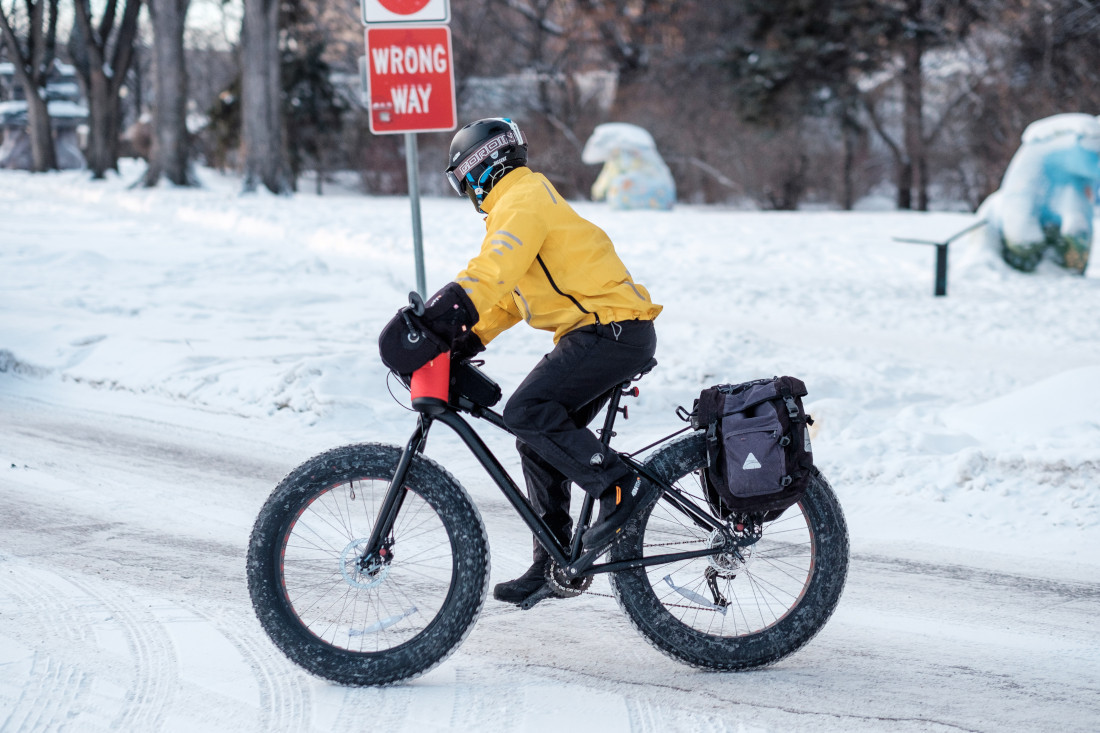Build it, and they shall bike
One green city
In 2021, Coun. Matt Allard, then the chair of Winnipeg’s infrastructure and public-works committee, requested increased funding for active transit. Coun. Jeff Browaty opposed the request and dismissed Winnipeg as a “car-oriented city, and that’s going to stay the way it is.”
Allard’s ask would have cost about $16 million and hopefully helped the city meet its climate goals for 2030.
It’s true that driving is an appealing mode of transportation in Winnipeg. Ice-cold winters make waiting at bus stops and biking into the wind seem pretty off-putting. At the same time, this isn’t a good reason to not invest in active transportation that serves Winnipeggers all year.
A study by the University of California Davis found that investing in active transportation infrastructure could encourage more people to choose their bike over their car, in turn decreasing emissions. The study also found that cities actually saved money, since they had to spend less on maintaining car infrastructure.
While Winnipeg weather is obviously vastly different from California, it’s still worth making winter cycling more approachable here.
Winter cycling is scary, even for many experienced cyclists. The streets are icy, drivers are sometimes hostile, and wearing extra gear can make biking a bit awkward. Having more protected bike lanes – rather than painted lines that are impossible to see under grey, winter sludge – could help protect cyclists.
“The hardest part of winter biking is the same as it is during the summer: a lack of infrastructure and poor maintenance of current infrastructure,” Arielle Villarin, says. They run Critical Mass Winnipeg, a group that encourages cyclists to ride together and take up space in areas that aren’t always friendly to cyclists.
“The winter of 2021 to 2022 was horrible. I’ve seen the city step up their maintenance of bike infrastructure since then, but by no means is it on par with how they maintain infrastructure for motorized vehicles,” Villarin says.
This year, a number of cyclists made headlines when they decided to plow bike lanes they felt the city had neglected. While shoveling, they noticed the streets were clear for cars.
Winnipeggers contend with the snow for about five months of the year. It’s hard to encourage anyone to cycle in the winter in Winnipeg, but why would anyone who has access to a car choose to cycle in the winter when there are no protected lanes, or the lanes that do exist aren’t being maintained? For Villarin, cycling is a more reliable way to get around than the bus.
“I wish I could say I wanted to bike in the winter, but the decision was made out of necessity,” they say.
Whether on a bike or a bus, pedestrians are going to be out in the cold for a bit. At least cyclists know they’re making ground, as opposed to waiting for the bus.
It’s true that Winnipeg is a city designed for cars, but the municipal government’s decisions help keep things this way.
When Villarin rides on the Netsaweya River Trail in the winter, they see what Winnipeg could look like if the City made different choices.
“I think the most amazing thing about biking only happens in the winter. Riding on the road is scary enough, but when you’re down on the river, it’s like a better, car-free world is possible.”
Allyn Lyons is a graduate of the University of Winnipeg and Red River College’s Creative Communications joint-degree program. It’s pronounced uh-lyn.
Published in Volume 77, Number 19 of The Uniter (February 16, 2023)







